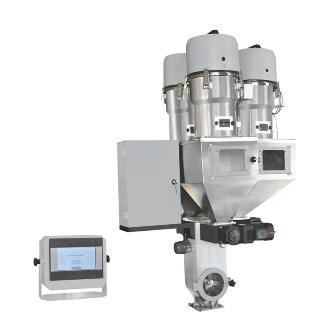The effectiveness of a Volumetric Ratio Mixer is a critical parameter in industries where precise mixing is essential for product quality and consistency. Evaluating the performance of these mixers involves a multifaceted approach that considers various factors, from the initial setup to the final outcome. This article delves into the methods and metrics used to assess the mixing effects achieved by Volumetric Ratio Mixers.
Volumetric Ratio Mixers are precision instruments designed to blend two or more liquids in a specific ratio to achieve a homogeneous mixture. The assessment of their mixing effectiveness begins with the understanding of the mixer's design and operational parameters. The mixer's geometry, the speed of rotation, and the flow rate of the liquids are all factors that contribute to the overall mixing efficiency. By analyzing these elements, one can predict the mixer's performance and make necessary adjustments to optimize the process.
One of the primary methods to evaluate the mixing effect of a Volumetric Ratio Mixer is through visual inspection. A well-mixed solution should exhibit uniform color and consistency, indicating that the components have been thoroughly combined. However, this method is subjective and may not be suitable for all applications, particularly those involving transparent or colorless liquids.
A more objective approach to assessing the mixing effectiveness of Volumetric Ratio Mixers is through the use of analytical techniques. Spectrophotometry, for instance, can be employed to measure the concentration of a specific component at various points within the mixture. By comparing the concentration profiles before and after mixing, one can determine the degree of homogeneity achieved. Similarly, rheological measurements can provide insights into the viscosity changes that occur during the mixing process, which can be indicative of the mixer's performance.
Another important aspect of evaluating the mixing effect of Volumetric Ratio Mixers is the assessment of the residence time distribution (RTD). This parameter refers to the time that a fluid element spends within the mixer before being discharged. A well-designed mixer should have a narrow RTD, ensuring that all fluid elements experience similar mixing conditions and exit the mixer at approximately the same time. This can be analyzed through tracer studies, where a known quantity of a tracer is introduced into the mixer, and its concentration is monitored over time.
The stability of the mixed product over time is also a crucial factor in evaluating the effectiveness of Volumetric Ratio Mixers. Some mixtures may appear homogeneous immediately after mixing but may separate or stratify over time due to differences in density or other physical properties. Long-term stability tests can help identify such issues and guide the selection of appropriate mixer designs or operational parameters.
In addition to these analytical methods, the efficiency of Volumetric Ratio Mixers can also be assessed through computational fluid dynamics (CFD) simulations. These simulations can provide a detailed visualization of the flow patterns within the mixer, allowing for the identification of any regions where mixing may be less effective. By comparing the simulation results with experimental data, one can validate the mixer's design and optimize its performance.
In conclusion, the assessment of the mixing effect of Volumetric Ratio Mixers is a complex process that involves a combination of visual inspection, analytical techniques, residence time distribution analysis, stability testing, and computational simulations. By employing these methods, one can gain a comprehensive understanding of the mixer's performance and make informed decisions to improve the mixing process. The effectiveness of Volumetric Ratio Mixers is not only crucial for achieving a homogeneous mixture but also for ensuring the quality and consistency of the final product, making it a vital aspect of process optimization in various industries.
